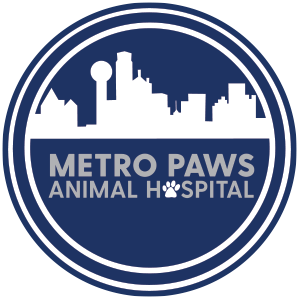By: Anna Adams, DVM
Delivering puppies at home can be an exciting, captivating, and scary experience! Understanding all of the proper steps before the big day comes can help the process to run much more smoothly for both you and your dog. Furthermore, knowing when to call a veterinarian for assistance can put your mind at ease and increase the safety for your dog and her puppies.
PUPPY PREPARATION AND PRENATAL CARE
The female dog is pregnant for about 63 days, although the normal average is 58-68 days. It is helpful to know the exact breeding date to be able to provide appropriate pre-natal requirements and to anticipate whelping (birth).
Pregnant dogs will require an increasing number of calories as her pregnancy progresses. It is recommended to transition the expectant mother to a puppy diet during her pregnancy. Although it may seem appropriate, refrain from supplementing calcium or other vitamins as it may cause metabolic imbalances and be harmful to the puppies. Supplementation is not necessary if the expectant mother is fed a high-quality diet.
The expectant mother should be completely vaccinated prior to (but not during) pregnancy. This ensures that she can pass an adequate immunity (antibodies) to the puppies through her milk. Continue to administer heartworm, intestinal parasite, and flea preventatives to the expectant mother. But first consult with your veterinarian to ensure that the products you are using are safe to use during pregnancy!
In order to avoid contraction of infectious disease (e.g., herpesvirus) prior to birth, completely isolate the mother from all other dogs 3 weeks before delivery. At approximately day 45, just before isolation, bring your pregnant pup to the veterinarian for an x-ray. This will let you know how many puppies to expect during birth.
SUPPLIES TO GATHER BEFORE BIRTH:
- A clean, comfortable location for your mother to give birth. This can be a professional whelping box, a cardboard box, a large plastic storage container, or even a children’s swimming pool
- A small, warm box to place puppies in after delivery
- Many clean hand towels and blankets
- Sterilized scissors for cutting umbilical cords
- Warm water bottles
- A clock, paper, and pencil to record the timing of puppy delivery
- The number of your veterinarian and the closest veterinary emergency hospital
DELIVERY:
STAGE 1: Labor
There are several signs that indicate your dog is going into labor soon. The most accurate predictor is a drop in body temperature. Keep a daily log of your dog’s rectal temperature during her last week of pregnancy. The temperature will drop below 100 F before labor. If the temperature stays this low for 12 hours, it indicates that labor will begin within 24 hours.
Other signs to look out for that may indicate impending labor are nesting behavior, watery vaginal discharge, loss of appetite and vomiting, milk production, panting, and anxiety/restlessness.
STAGE 2: Puppy Delivery
During this stage, you will begin to see strong abdominal contractions and the birth of puppies one by one. You may see 10-30 minutes of hard straining before a puppy is delivered. You should expect the birth of one puppy every 45-60 minutes. Sometimes, the mother may rest between puppies. This is normal and may last from 1-4 hours. See the list below for signs to look out for that indicate you should call your veterinarian immediately!
The first thing to emerge is a dark fluid-filled bubble called the amniotic sac. Do not break this bubble yourself and wait for the puppy to arrive. Once the puppy exits the birth canal, the mother will lick the membranes away. Be prepared to break the sac within a few moments if the mother does not do this herself. Just break open the sac and slip the puppy out. While the puppy is still attached to the cord, rub it with a clean towel and wipe its nostrils and mouth free of mucous. If the mother does not chew the umbilical cord herself, tie the cord in a knot about one inch from the pup and cut with scissors.
About 40% of puppies are born tail first, this is normal!
STAGE 3: The Afterbirth
The afterbirth (placenta) is also passed between puppy deliveries. Sometimes it is after every puppy, about 15 minutes later. Sometimes the mother will deliver two puppies and then two placentas. This is normal and not cause for concern.
The afterbirth should be brown to green in color and should not smell badly. The mother may try to eat the placenta, but this is not advised as it can cause her to vomit.
WHEN TO SEEK VETERINARY ASSISTANCE
Knowing when to seek veterinary assistance is extremely important. If you are at all concerned during your pup’s delivery, reaching out to a veterinarian is the best idea. Use the following list as a guide for when to call your veterinarian. If any of these occur, your dog may require a cesarean section (C-section):
- The mother has been straining for 30 minutes with no puppy produced
- You notice green discharge more than 10 minutes before the first puppy is born. This is ok AFTER the first puppy is born
- It has been more than 4 hours since the last puppy and you know there are more puppies inside
- The mother has had weak or infrequent contractions for more than 2 hours
- There is vaginal discharge that has a bad odor
- The mother has been pregnant for more than 70 days
- A puppy appears tail first and the head is too large to pass through the birth canal
- Any signs of severe pain
